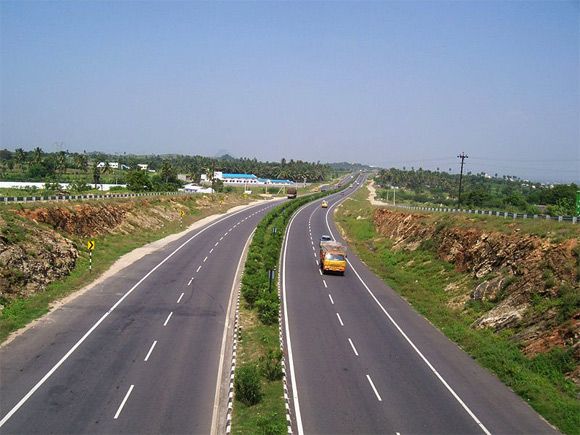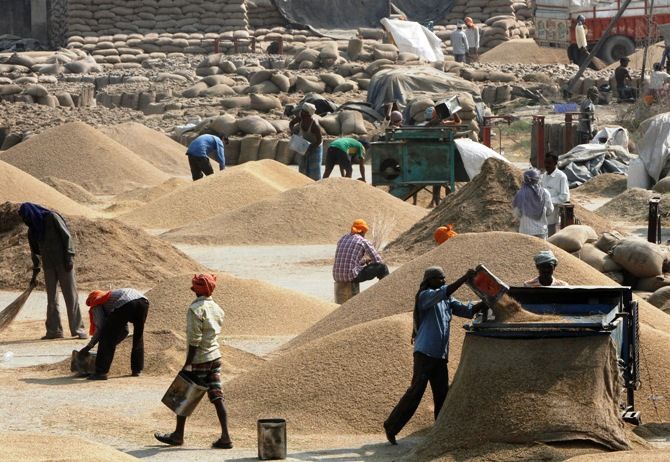Equity flows to domestic institutions have finally begun, with consistent monthly inflows in excess of $1 billion, notes Akash Prakash.

There is very little doubt in my mind that India will go through a cyclical revival.
In fact, it has probably started already.
Oil prices are down, the commodity complex is at a five-year low, gold continues to dip and the rupee is stable. Many of our macro and short-term fiscal concerns are getting addressed.
Some projects are getting de-clogged and if the PMG (project monitoring group) data are accurate, then of the 176 projects cleared, work has begun or restarted on at least 76.
In many sectors, you will see a slew of incomplete projects coming on stream, as promoters try to use the more business-friendly environment in Delhi to complete long-pending projects.
As an example in the metals sector, out of an organic capital-expenditure commitment of $69 billion (till 2017), almost $50 billion will be commissioned over the coming 12-18 months, according to Barclays research.

Inflation seems to have stabilised, and is behaving in line with the trajectory expected by the Reserve Bank of India (RBI).
While the timing of an RBI rate cut is unclear, the direction of the next rate action is clearly going to be down. The RBI has regained its inflation-fighting credibility.
The banks are flush with funds and, in the absence of credit demand, are finding it difficult to deploy surging deposit inflows. Interest from foreign institutional investors in our debt markets has never been higher, with the attractive carry apparent to all.
Irrespective of whether the RBI cuts repo rates or not, system-wide interest rates - both for bank lending and bond yields - are going to decline in the coming months.

Capital markets are buoyant, with the stock markets up over 30 per cent in dollar terms; companies have regained access to equity markets; and some corporate balance-sheet repair has begun.
Equity flows to domestic institutions have finally begun, with consistent monthly inflows in excess of $1 billion.
These inflows will ensure that markets have a continued bid, and fund-raising for both the government divestment and private companies will be ongoing.
Corporate confidence has improved, with many promoters now feeling confident that project-level hurdles can be tackled.
In the interim, till the private sector regains its appetite for new projects, large public projects, such as the Dedicated Freight Corridor and the Delhi-Mumbai Industrial Corridor, seem to be gaining traction.
Consumer confidence has also improved, and the first signs of improved demand for consumer discretionary categories, such as automobiles and white goods, is apparent.

As rates decline and hiring improves, these initial signs of demand acceleration will only strengthen. Global growth also seems to have stabilised, led by the United States. No great acceleration, but no double dip either.
The combination of all the above will drive the economy towards six-seven per cent gross domestic product growth over the coming 18 months.
As this recovery sets in, earnings will also accelerate and markets should continue to do fine.
The risk is that everyone, including the policymakers in the government and investors, will start extrapolating this growth acceleration and assume that all is well. We run the risk of complacency setting in again - why go after the hard, politically difficult stuff when growth is rebounding anyway?
The structural reforms needed are by definition difficult and take on deep vested interests. If they can be avoided, that is always the easier option.
We have to realise that there is no option now; many of our policies, laws and processes are outdated and unsuited for an economy of the size and complexity of India.

The other issue is that if markets remain good, investors become more forgiving.
The government may be able to raise money for a public-sector bank holding company, without implementing too many of the P J Nayak committee's recommendations, for example.
That would not be possible in a more difficult market environment.
When they are making money, investors are less anxious to exercise discipline on the issuers of equity, be it the government or companies.
The path to partial recovery and six or 6.5 per cent growth seems apparent; the difficulty will be in further accelerating this growth beyond the seven per cent level.
For that, as pointed out many times before, we need to undertake the harder and more structural reform.
The difficulty for us as investors is that there seems to be little obvious desire to move on these issues.

Be it education, taxation, judicial reform, land, labour, etc. There also seems to be a surprising lack of interest on the part of the government to bring in or engage with domain experts and industry professionals.
Despite a lack of experience and bandwidth in many areas of the government, there seems to be no interest in or felt for the need to bring in outside experts.
When one looks at a country such as India, you would normally be very comfortable making a long-term prediction.
You could normally say the country will grow at seven-eight per cent for many years, given all the long-term tailwinds in our favour - demographics, urbanisation, rising productivity and so on. It is in making short-run predictions of a year or two that you would normally have greater variability.
I think India today is in an unusual position in which one can with much greater confidence predict a short-term, cyclical rebound than one can long-term growth rates.
Will we get to six per cent growth over the coming 12-18 months? I think very likely - almost baked in the cake, so to speak. What will be the growth rate five years from today?
That's far more debatable. It could be eight-nine per cent, if we do certain things right, and take the action that's needed in the areas mentioned above. It could also be five-six per cent, if we let complacency set in and take the easy way out.

It largely depends on us.
God is kind, and has given the new government a free pass, so to speak.
They must use the coming cyclical recovery to move on the more structural reforms.
They must move on rationalisation of subsidies, for example, and not use the windfall of falling oil prices to put off a much broader and deeper rationalisation across all subsidies.
We still have time for this government to take action.
But the coming six to nine months are crucial. If investor disillusionment sets in and the honeymoon ends, the same investor who is today pumping money into India and fawning all over the country could just as easily reverse course.
Combine that with the inevitable market shock as global rates rise, and the Indian virtuous circle could move back into a vicious one.







